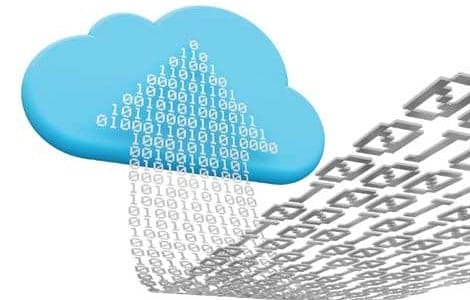What is FedRAMP Authorization?

Just what is FedRAMP exactly? Given the cutting-edge digital era we live in, it’s extremely easy and convenient to access the information we need and execute a whole plethora of transactions online at the click of a button. A prime example of advanced technology is Cloud computing and services. The proliferation of Cloud services has helped provide multiple benefits ranging from remote access, speed, vast amounts of storage, and better collaboration among partners and employees strewn across the world.
However, technology is a double-edged sword and just as there are exponential merits, there are bound to be risks too. And when the security risk pertains to the government the implications can be huge.
Federal agencies have come to rely upon Cloud solutions to transform their operations. However, there was a critical need to address the security concerns pertaining to sensitive national and state level data. With this goal in mind, the FedRAMP was created in 2011.
What is FedRAMP? And What Does It Mean?
FedRAMP stands for Federal Risk and Authorization Management Program. In layman’s terms, the Cloud services that are used by federal agencies need to adhere to a set of security standards and protocols, which is nothing but the FedRAMP. It’s a program that is backed by the U.S. government and the Federal Chief Information Officers Council.
The FedRAMP is a standardized program for ensuring the cyber security risk management of Cloud products and services that are used by federal agencies. It not only uses a standardized approach for covering risk uniformly across all government agencies but it’s also quite comprehensive in that it covers a whole range of activities pertaining to security risk. These activities include assessing, authorizing, and monitoring the security continuously of Cloud products and services.
To ensure security, only those Cloud service providers that have been stamped with the FedRAMP approval are cleared to work with government agencies. There are a couple of crucial benefits of the FedRAMP, namely that it enables government bodies to leverage Cloud solutions and ensures that the integrity of Federal data is not compromised. The emphasis on security when utilizing Cloud technologies is key to protection of highly sensitive and confidential federal information.
Let’s examine what FedRAMP authorization is in detail and what are its benefits for government organizations and providers.
FedRAMP for Government
The standardized security protocols of FedRAMP facilitate adoption of secure Cloud technologies. To this effect, several Executive Branch entities work together to develop, operate, and manage the FedRAMP program. The primary entities that are involved in these operations are: the Office of Management and Budget (OMB), the Joint Authorization Board (JAB), and the Program Management Office (PMO). The Office of Management and Budget (OMB) is the governing body that established the FedRAMP in 2011 and issued the policy memo which includes the key requirements of the program.
The JAB, which is the primary governing and decision-making body of the FedRAMP, includes chief information officers (CIOs) from the Department of Defense, Department of Homeland Security, and the General Services Administration.
Established and residing within the General Services Administration (GSA), the PMO is tasked with the development of the program that also includes the management of day-to-day operations. Plus it supports agencies and Cloud service providers with the authorization process. The PMO is an excellent resource for everyone who is looking to get a FedRAMP authorization.
Additionally, the FedRAMP is comprised of other entities such as the National Institute of Standards and Technology (NIST), the Department of Homeland Security (DHS), and the Federal Chief Information Officers (CIO) Council. The NIST aids in developing the accreditation standards of independent third party assessor organizations besides offering advice on the compliance requirements. The management of the monitoring strategy that includes a host of critical elements, lies with the DHS. Lastly, the Federal CIO Council propagates information to the Federal CIOs and others via communication and events.
FedRAMP Compliance Requirements
All providers of Cloud services and products that hold or handle government data must be FedRAMP authorized. However, getting a FedRAMP authorization is understandably not easy, as it requires Cloud service companies to follow meticulous rules and processes. Given the high level of security needed to protect federal data at all times, it’s an elaborate process and one that’s required to safeguard the national interest. In all, there are 19 standards and guidance documents along with 14 laws and regulations.
Although the requirements are stringent, the good news is that there are several benefits of FedRAMP. For one it has streamlined the process, thereby eliminating duplicate efforts for both providers and agencies. Moreover, standardization has introduced consistency with uniform requirements across all agencies. It also allows multiple Federal agencies to work with an approved provider, reusing the authorization security package. For the agencies too, it’s a blessing as they don’t have to abide by a separate set of security protocols for each individual agency. As a result, FedRAMP offers time and cost efficiencies to all parties once the initial authorization is complete.
How to Get FedRAMP Authorized
There are two ways of getting FedRAMP certified. One type of authorization is the Provisional Authority to Operate (P-ATO) that is granted by the Joint Authorization Board (JAB) and another is the Agency Authority to Operate (ATO).
In the former, there is a priority for authorizing those Cloud services that will enjoy widespread use across the government. However, the P-ATO approval means that there may be a probable acceptance for government-wide use. And for authorization, the CIOs will review and ensure that the provider meets all the necessary controls. In addition, the provider is required to use an accredited third-party assessor organization. Lastly in the P-ATO, the PMO oversees continuous monitoring.
In case of the ATO, it is issued by the agency itself but they also use a third party assessor to conduct their own independent testing as an added precautionary measure. It’s important to note that the agencies have varying levels of risk acceptance and that the Cloud service provider conducts continuous monitoring, which in turn is monitored by the agency.
Are you an agency looking for a completely secure Cloud service or product? Software AG Government Solutions presents FedRAMP-Authorized resources that offer phenomenal IT transformation in a safe and secure manner.
Want to keep up with all things Software AG Government Solutions?
Share your email address below.

View our upcoming events and on-demand webinars







